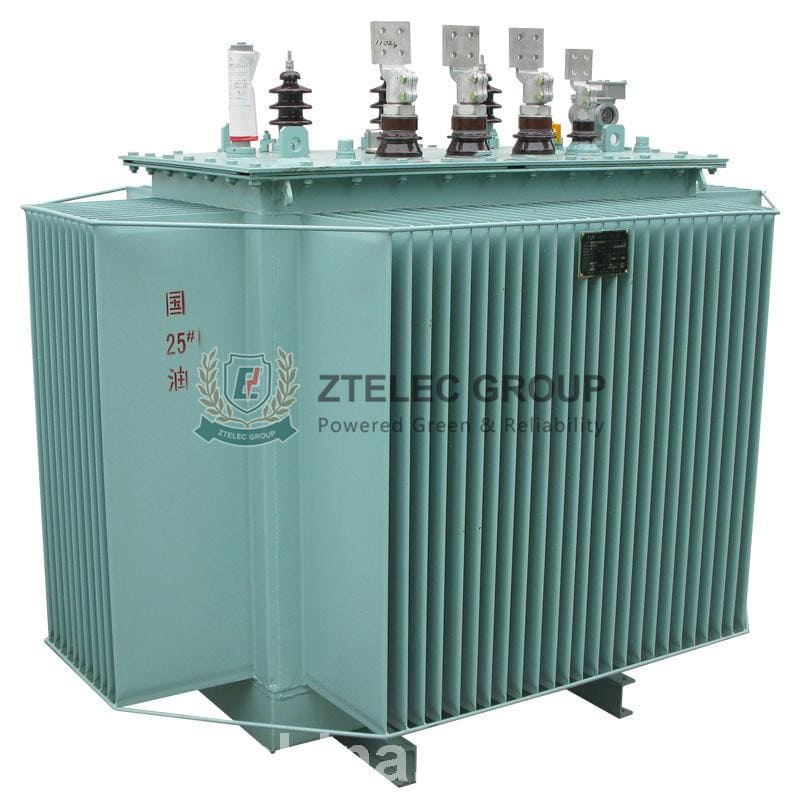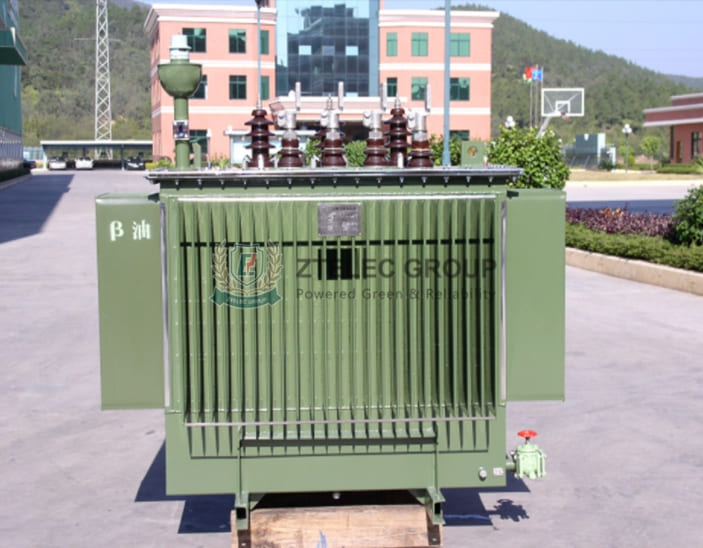ADVANTAGES AND DISADVANTAGES OF OIL-IMMERSED TRANSFORMERS
09-19 2024 | By:
what is OIL-IMMERSED TRANSFORMERS
An Oil-Immersed Transformer is a type of transformer in which the core and windings are submerged in insulating oil. This oil acts as both a coolant and an insulator, helping to dissipate the heat generated during operation and providing electrical insulation to prevent short circuits and electrical arcing.
The transformer is typically made up of a core, windings, and a tank filled with insulating oil. The device uses convection to move the oil around and through the transformer, cooling it off. To avoid oil deterioration, transformer oil must be kept at an operating temperature of less than 85°C.
Oil-immersed transformers change a current to a higher or lower voltage using the principle of induction. This process creates a surplus of heat. The oil helps to keep the transformer from overheating. The windings and core are submerged in transformer oil. It acts as a cooling agent and an insulator.
There are several types of oil-filled transformers, including single-phase transformers, three-phase transformers, and power transformers. They are used in many industries and can be found at both electrical substations and power distribution centers
Oil-immersed transformers are a common type of transformer whose insulation system uses a liquid insulating agent (usually insulating oil). Here are some advantages and disadvantages of oil-immersed transformers:

1. Advantages:
Good insulation properties: Oil is an excellent insulating material that can effectively isolate windings and provide good electrical insulation properties.
High power density: Oil-immersed transformers can transmit larger power relative to their volume and have higher power density.
Good cooling performance: Oil can effectively cool the transformer and help maintain normal operating temperature of the equipment.
Low noise: Due to the better insulating properties of insulating oil, oil-immersed transformers usually produce relatively low noise.
Smaller volume: Under the same power, oil-immersed transformers usually have relatively smaller volumes.
Adapt to large-capacity needs: Oil-immersed transformers are suitable for large-capacity, high-voltage power systems and can meet the needs of large-scale power transmission and distribution.

2. Disadvantages:
Environmental issues: The insulating oil of oil-immersed transformers may contain some harmful substances, so environmental issues may be involved when handling and disposing of waste oil.
Maintenance is relatively cumbersome: Oil-immersed transformers require regular inspection and maintenance of oil quality, including testing and replacement of oil quality, which may be relatively cumbersome.
Higher cost: The manufacturing cost of oil-immersed transformers is relatively high, especially in special environments where explosion-proof equipment or oil tanks are required.
Possible risk of leakage: Oil-immersed transformers have a certain risk of leakage during operation, which may have a certain impact on the environment and personnel safety.
Not suitable for special environments: Oil-immersed transformers may not be suitable for use in some special environments, such as high altitude, humid or corrosive environments.
When selecting a transformer, you need to weigh and consider factors such as specific application scenarios, cost, and environmental protection to determine whether to use an oil-immersed transformer or other types of transformers.
Oil-immersed transformers: principle of operation
The principle of operation of an oil-immersed transformer involves the following steps:
1.Voltage Transformation: The primary winding generates magnetic flux through the input voltage, which closes the loop in the iron core and induces the corresponding voltage in the secondary winding. By changing the winding turns ratio, the voltage can be increased or decreased.
2.Heat Dissipation: The process of voltage transformation creates a surplus of heat. The oil in the transformer helps to keep the transformer from overheating. The windings and core are submerged in transformer oil, which acts as a cooling agent and an insulator. Convection moves the oil through the windings, coils, and core, keeping the transformer from overheating. The oil is further cooled externally at lower voltage and in an air-cooled radiator with higher voltages.
Insulation: The transformer oil also provides electrical insulation, 3.preventing short circuits and electrical arcing.
In summary, the working principle of an oil-immersed transformer can be attributed to converting the voltage of the input power supply into the required output voltage through electromagnetic induction between the primary and secondary windings under the cooling and insulation protection of insulating oil
Types of oil-immersed transformers
There are several types of oil-immersed transformers. Here are a few of the most common ones:
Single-phase transformers: These use one pair of windings and are used in lower-load situations, such as rural areas.
Three-phase transformers: These are made up of three pairs of windings. The windings typically go around a core sectioned into three parts. Three-phase transformers are used in higher-load areas and can supply three circuits with energy.
Power transformers: These are designed to handle much higher loads. They can step voltages up or down and transmit a current from one place to another.
Distribution transformers: These transmit lower voltages from the electrical grid to homes and businesses.
Each type of transformer is designed for specific applications and load requirements. The choice between these types depends on the specific needs of the electrical system where the transformer will be used
Oil-immersed transformer maintenance and repair
Maintenance and repair of oil-immersed transformers are crucial to ensure their efficiency, lifespan, and safe operation. Here are some key aspects of maintenance and repair:
Routine Maintenance: This includes daily, weekly, monthly, and yearly maintenance strategies. Daily routines include checking oil and temperature levels. You should ensure the ambient, winding, and oil temperatures are within the typical range. Moreover, you should check whether the oil level gauge adapts to temperature changes. If your oil-filled transformer doesn’t accomplish one of these things, it’s time to replace the indicator.
Timely Intervention: Clean and dehydrate insulating oil as needed to prevent deterioration and ensure sustained performance.
Repairs and Overhauls: Promptly address faults with comprehensive diagnostics and targeted repairs to restore optimal condition.
Leak Troubleshooting: If there are any leaks, it’s important to troubleshoot everything from leftover oil residue to active radiator leaks3.
Remember, maintenance is not a one-time thing. It requires a consistent and systematic approach to ensure the transformer operates safely and efficiently. Always consult with a professional or refer to the manufacturer’s manual for specific maintenance and repair procedures.
You may also find these interesting:


